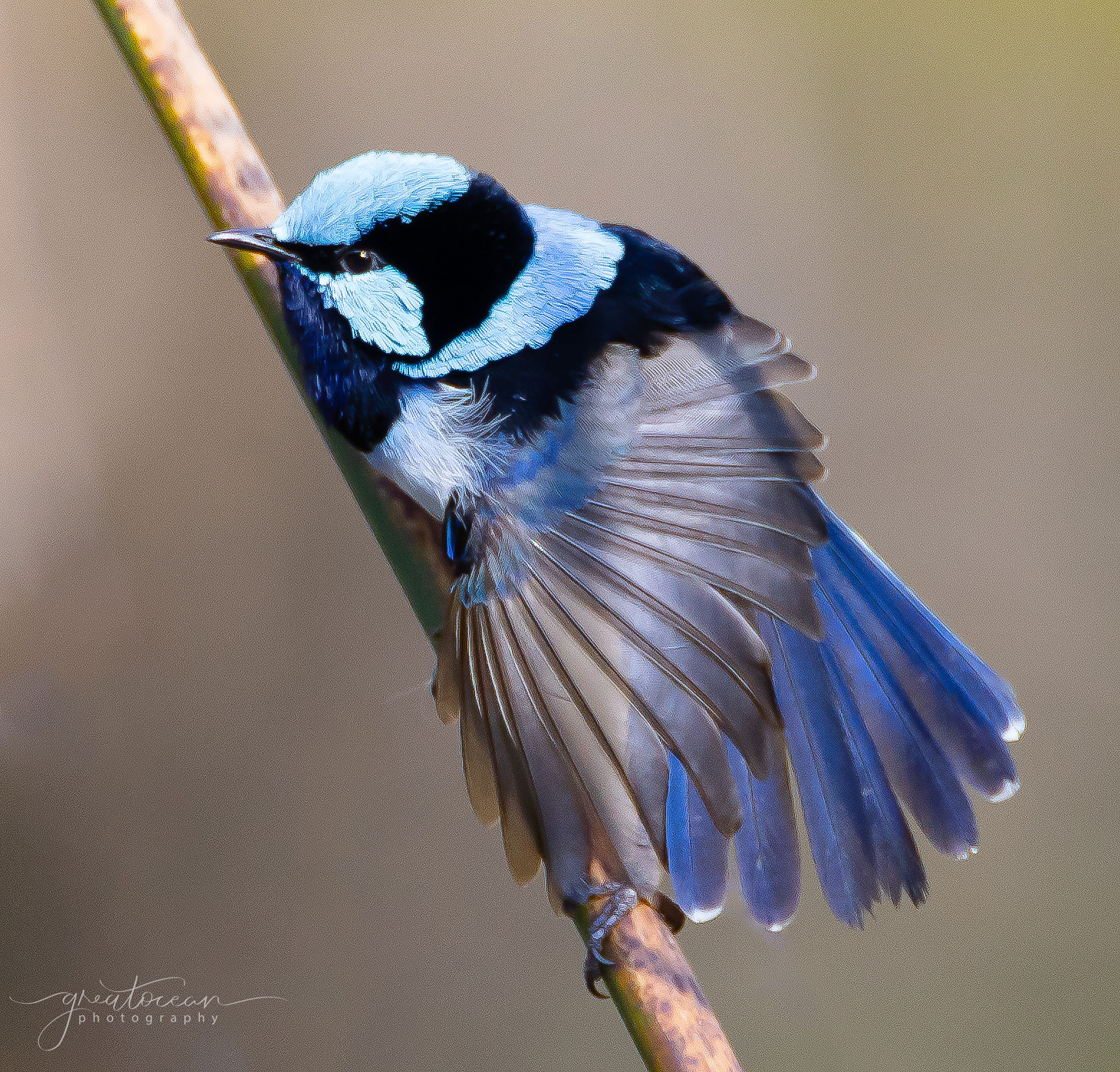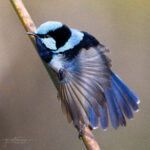Superb Fairy-wren
(Malurus Cyaneus)
This endearing little bird has a fascinating story. Adult males, with their bright rich blue plumage above and on the throat, are among the most brightly coloured of the species, especially during the breeding season when the blue turns iridescent. Their bellies are grey-white and the bills are black.
DESCRIPTION
Male superb fairywrens are often accompanied by a group of brown birds that seem to be females (‘jenny wrens’) but a proportion of them are males that have not yet attained their bright blue breeding plumage. Females are not so striking – they are mostly brown above with a dull red-orange area around the eye and a brown bill. Older females have a greenish gloss on a brown tail.
The tiny nests are usually untidy and hold a clutch of 3-4 eggs that are not necessarily the progeny of the same male as although the birds form pairs between one male and one female, each partner will mate with other individuals. Male wrens will pluck yellow petals and display them to females as part of a courtship display.
Attracted to almost any area that has at least a little dense undergrowth for shelter, the super fairywrens can be found in domestic gardens, moderately thick forest, woodland and heaths, and are regular visitors to Wildlife Wonders. They eat mostly insects, and supplement their diets with seeds.
Major nest predators of the superb fairywren include Australian magpies, butcherbirds, laughing kookaburras, currawongs, crows and ravens as well as introduced mammals such as cats and foxes. To distract predators from nests with young birds, the superb fairywrens may utilise a ‘rodent run’ display where they lower their head, neck and tail, hold out their wings and fluff their feathers as they run, voicing a continuous alarm call.
Want to see superb fairy-wrens at Wildlife Wonders? Book here!






